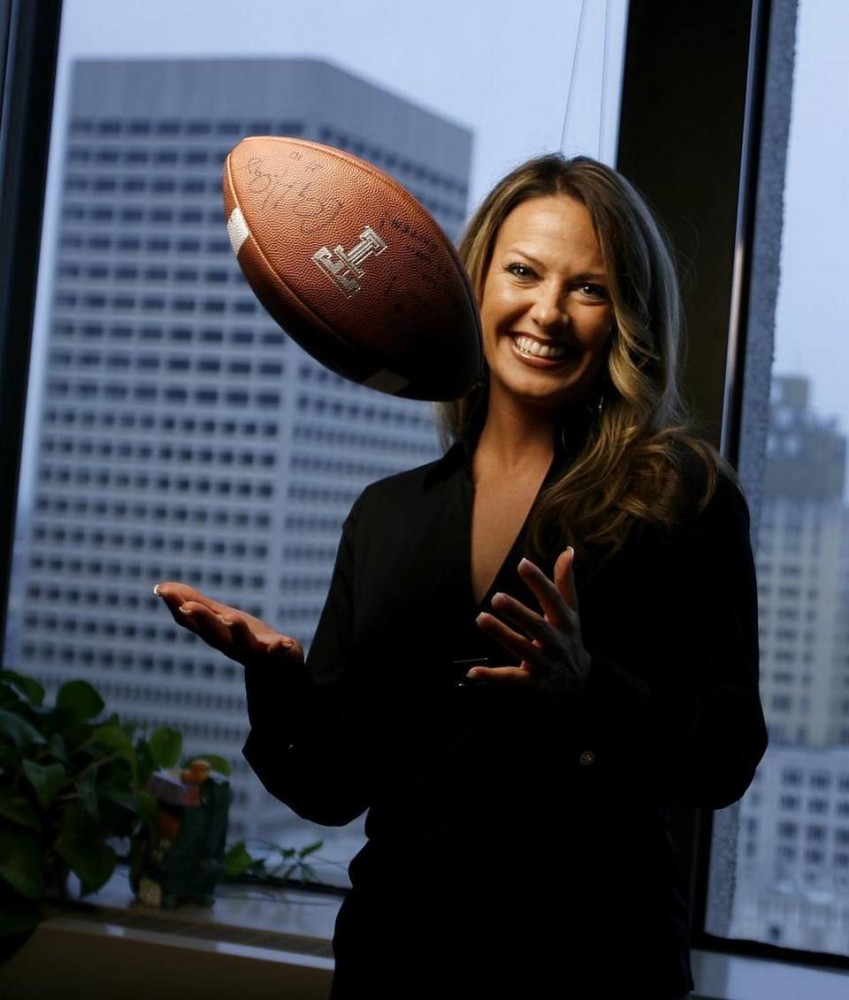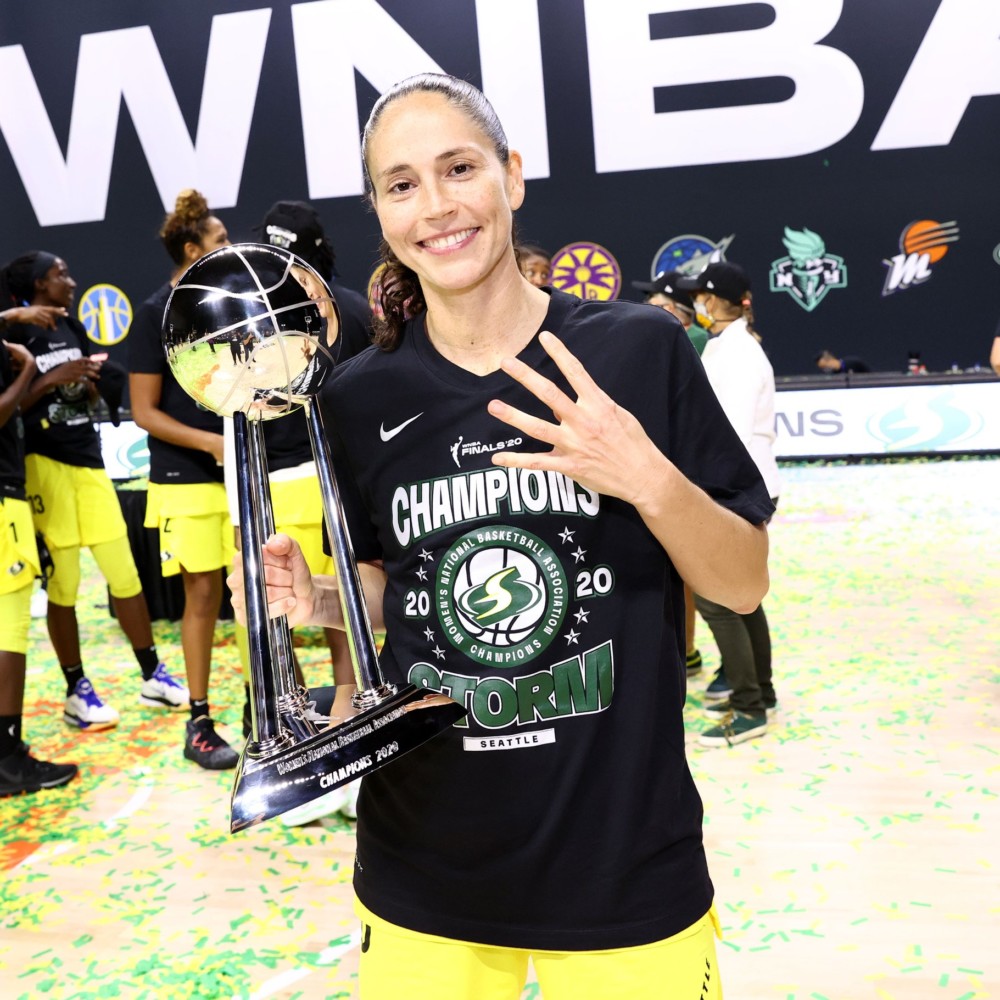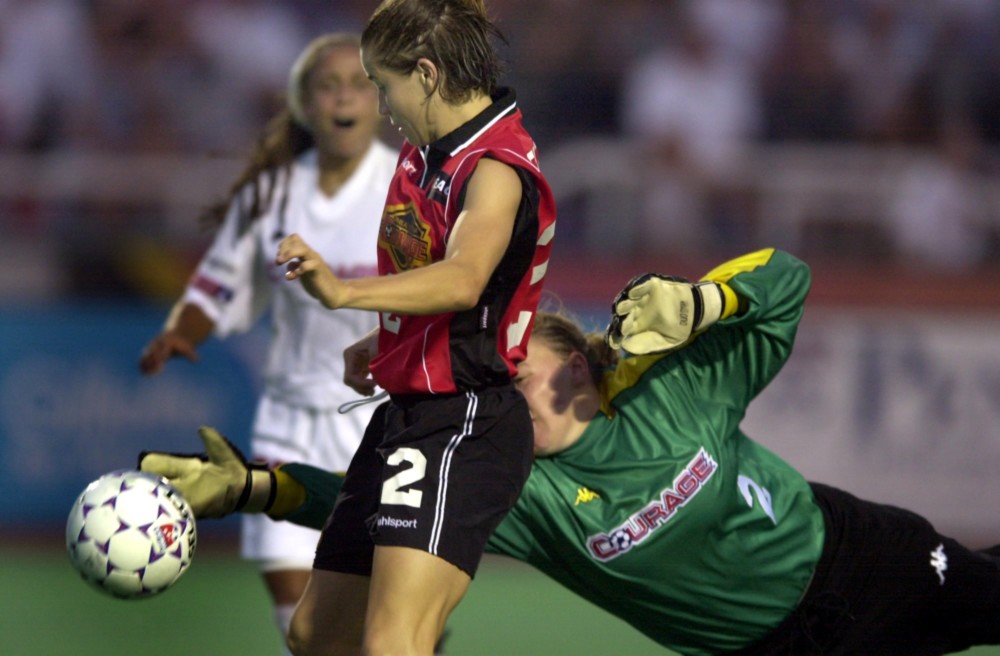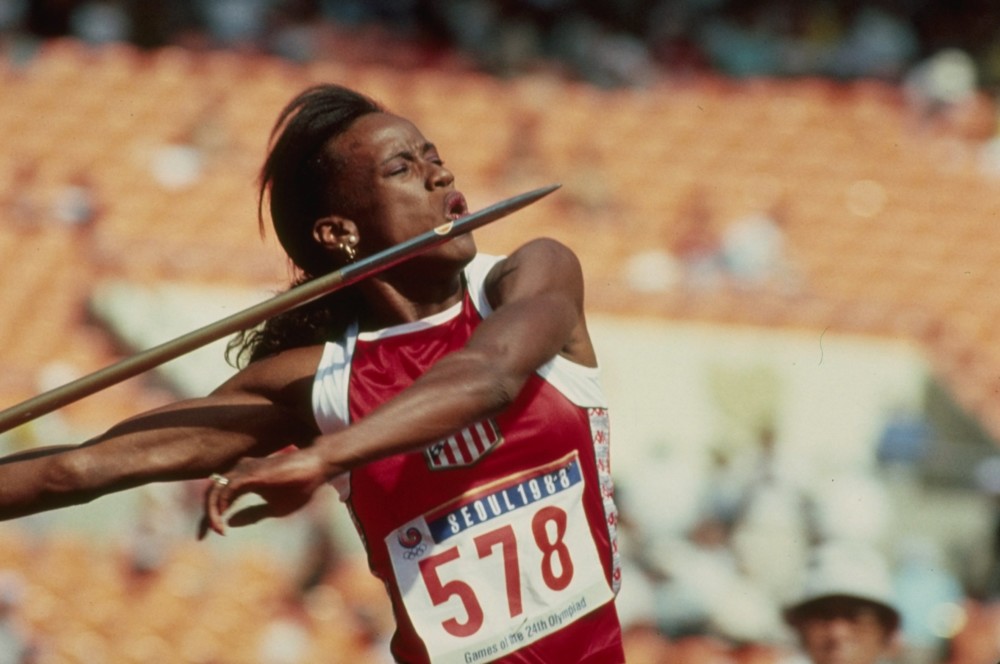By Kevin Casas
Fort Worth Star-Telegram.
Coming into the 2006 NFL draft, Texas Tech’s Cody Hodges had plenty to overcome in hopes of finding a team that would offer the 6-foot quarterback an opportunity at the next level.
Chief among them was finding a representative with the moxie and confidence to sell hard on a quarterback that commanded the “Pirate’s” offense in Lubbock under coach Mike Leach.
Like the long-shot that was Hodges entire career, the Hereford native went with a long-shot agent named Kelli Masters to sell his services to NFL general managers and coaches.
At that time, Masters, based in Oklahoma City, was among a handful of women representing NFL players.
Today, about 50 women are among the 875 agents registered with the NFL Players Association. The 2015 NFL Draft is Thursday through Saturday at Auditorium Theatre of Roosevelt University in Chicago.
Masters, Jill McBride-Baxter and Kristen Kuliga are among the more notable women representatives.
Side-stepping the fact that Masters had no clients or league experience, putting together a marketing and business plan to get Hodges drafted was also an inaugural effort.
Yet, it worked. Hodges signed and undrafted free agent deal and went to training camp with the Tennessee Titans.
“I am a lawyer by trade, so it’s not like putting that plan together was foreign to me,” Masters said. “It was just that I hadn’t done it in this sense prior and Cody hired me without any tangible proof that I could do the job.
“There were certainly things to overcome. There wasn’t much he could do about his height, but we focused on the things that made him successful and the things that NFL coaches wanted to see. I will always be grateful for Cody taking a chance on me.”
Agent landscape
Masters has represented players in every draft since taking on Hodges and brings four players into the fold this season, including TCU’s Sam Carter, Notre Dame’s Cam McDaniel, Oklahoma’s Jordan Phillips and Tulsa’s Demarco Nelson.
She’s managed Tampa Bay defensive end Gerald McCoy since he was drafted third overall by the Tampa Bay Bucs in 2010.
McBride-Baxter’s been at it since 1988 and counts numerous clients in her stable, including Miami Dolphins wideout Marlin Moore.
Having negotiated Doug Flutie’s 6-year $33 million deal with San Diego, Boston-based K Sports and Entertainment is run by Kuliga and still counts Flutie as a client 21 years later.
Even entertainer turned agency mogul Jay-Z has taken on a woman, former K Sports intern Kim Maile, to handle his Roc Nation athletes.
But whether player’s agents is a man or woman, and dismissing the idea that gender ever made a difference, prospective football players count women among the successful agents they vet each year.
“And no one’s going to tell you to your face if it does matter, so I’ve never worried about it,” McBride-Baxter said. “I’ve been around football my entire life. I’m the daughter of a football coach and married to one so it just made sense as a mom that it could be a career path for me.”
Kuliga said she’s had some minor episodes, but doesn’t count herself as a trailblazer.
“Most of the time, I’ve used humor to jab back,” she said. “But the bottom line, is the bottom line. If you represent your players well, it doesn’t go unnoticed.”
The woman card
Masters, a former Miss Oklahoma and Oklahoma City news correspondent for CBS, said she simply hasn’t had any experience with something approaching sexism as an agent.
“I think only a couple of times the parents of a player I was recruiting were surprised when I walked in to the room because they thought I would be a man,” Masters said. “But all that quickly goes away because essentially players and parents just want to know if you can do the job and if having me would best fit their needs.
“In a lot of meetings early on, I think the main question was as a woman why would I want to do this. I think in the beginning there was some curiosity and how I do things differently. But everything now is based on work I’ve already done.”
For Carter, his evaluation of agents came during his junior year when the TCU defensive back was nearing graduation and felt the itch to make the next level jump.
Masters’ name came up in several conversations along with a couple of other male agents.
“It wasn’t totally that I’ve had strong women in my life. I’ve had a strong father also,” Carter said. “But in doing my research, she and I just had a connection. I don’t know how to put it in words, but she just seemed like the kind of person that would have my best interest at heart every time.
“A lot of agents say that, but when you do the research, it was clear Kelli was the kind of professional that would see this all the way through for me.”
Understanding law and being an honorable, aggressive counselor is one place to start in the legal profession.
But Masters said she wasn’t keen on the idea of being an agent from the beginning.
“I remember early in law school being hit with that question in a lecture and a number of hands going up,” she said. “I wasn’t among those. But I was an athlete growing up and even though I stiff-armed it for a while, it began to become clear that this was what I should be doing.
“Once I got out of law school, I accepted a job with a firm and worked hard toward being made partner and then my workload started to increase. It was always a huge commitment, but I had an inkling for something different.”
Masters said her internal guide was pointing her toward positioning her practice to serve people.
That led her to early pro-bono work for non-profit groups, which became a full-blown side interest and then ultimately working for a professional athlete’s foundation.
“That’s where I got a glimpse into that world and it wasn’t long before I was being asked by some moms and former agents to consider taking on some work,” Masters said. “I was told several times that some of my legal clients would have loved to have someone as honest and works as hard I did from beginning.”
That only led to more requests for Masters’ time and then ultimately she spent a year doing due diligence on the possibility of adding the role of NFL player agent to her resume.
“I began to talk more with players, coaches and other agents and I was warned about it quite a bit before I registered with the NFLPA,” Masters said. “But the idea of it just wouldn’t go away.”
The early days
Every agent has different stories of how they entered the business and for Kuliga it was the untimely passing of arguably the godfather of modern player representation Bob Woolf.
The Boston attorney, described in his obituary by The New York Times as a pioneering negotiator for athletes, died at his Florida home in 1993 while ironically watching Monday Night Football.
“I had accepted a position with the Army JAG corps when I got a call from Bob’s son Gary,” Kuliga said. “Because of Bob’s passing, they needed someone to come on as an intern and take on some workload. So that intern spot turned into a job for a little over seven years.
“I did everything from hockey to baseball salary arbitration cases and lots of work in the background on the football side.”
That led her to a professional relationship with Wolf Associates client Doug Flutie.
In 2000, Flutie, who was coming off two bizarre seasons in Buffalo where he was essentially a backup with a better record in comparison to starter Rob Johnson, signed a $33 million deal with San Diego.
Negotiating the deal was Kuliga, which wound up being one of the first big scores for her new agency, K Sports and Entertainment.
Flutie is still among Kuliga’s clients as the former Heisman winner is now a college football analyst for NBC Sports.
In Masters case, she already had her job with the firm before taking on Hodges as her first client.
On paper, the conclusion of the relationship would seem a failure, as the Texas Tech alum never threw a regular-season NFL pass.
But Hodges insists, having Masters as an advocate was crucial to even getting an opportunity.
“She was the one that kept me involved in the draft,” he said. “My senior year, considering it was the only season in five years that I had played, I had no thoughts whatsoever about playing in the NFL or that I would be drafted.
“In the end, I didn’t get drafted, but Kelly kept telling me throughout the sixth and seventh rounds that it was a real possibility and she was getting the vibe that there was some real interest. The most important thing was that she had a plan outside of the draft.”
Although the last pick came and went, it was the third overall pick in the draft that would shape a training camp invite in August of 2006 for the Tech quarterback.
The Tennessee Titans selected Texas quarterback Vince Young with the third pick in the draft.
What happened next was a case-study in not only how professional football works, but how sound business strategy can put a player in position to succeed.
Drafted or not, Hodges was already on the Titans’ and head coach Jeff Fisher’s radar. His camp invite turned out to be the best possible scenario for being able to stick in an NFL organization.
Steve McNair, who had been given permission to negotiate a trade to Baltimore, finally got the deal done after the draft in early June.
That left Billy Volek as the likely starter for the Titans with Young slated for the backup/understudy role.
“Usually with something like that, a third QB is put on the practice squad,” Hodges said. “And with me being the only other quarterback there, I felt pretty good about the prospects.”
By the end of camp, head coach Jeff Fisher announced the signing of veteran Kerry Collins to compete with Volek for the starting role.
Volek balked, asked for a trade to San Diego and that left Hodges as the only real option for at least starting the season with Tennessee.
Inexplicably, Fisher opted to have just two quarterbacks on the roster for the 2006 season and Hodges was released.
“I guess you can look back and figure it didn’t work,” Hodges said. “But the goal was just to get to camp first and then at least get a practice squad spot. I came close no doubt, but I also figure the plan Kelli and I had in place made a difference for even having a camp invite.”
And probably more important to Hodges, was that Masters stuck with him when he tore his MCL at the 2006 Cotton Bowl.
“I had spoken with a few agents already,” he said. “But after I got hurt, the only one that called was Kelli. That meant a lot to me and honestly, the thought never crossed my mind that I was hiring a woman, let alone someone that hadn’t been in the business yet.
“I was just glad an agent was taking an interest in me and that fact alone was probably why I went with her.”
The evaluation process
According to McBride-Baxter, it’s not rocket science to do homework prior to taking on clients and running an agency.
“You don’t want to take on guys that are messed up,” she said. “I’m all about giving second chances and my dad helps me out a lot with that because he just automatically loves every player.
“You try to filter as much of the problems as you can before hand because there’s just too much at stake for both the NFL, the college the player comes from and then your agency. I mean if the player hasn’t figured it out in college, that he has the resources available to him there, then why would a team give him so much money and think he’ll get better.”
Kuliga said knowing the player you take on is probably one of the biggest hurdles because it can be a gamble.
But she also said another sizable mountain, is understanding how the different teams will operate during the draft and then immediately afterward.
“The toughest part of the draft is really the second day and then almost immediately afterward,” she said. “I might be jockeying 10-12 different teams wanting to sign my player and that’s when you really get an understanding of how things work.
“It’s very chaotic if you have a priority free agent. It’s a little bit easier if you have a quarterback because there’s just three spots on each team usually so you know where you stand there. But if you have an offensive guard, that can be difficult to manage. You have to take a look at the depth chart, understand how many guards the team has, understand how many tackles or centers can shift over to play guard, then you have to understand their contracts and where those stand.”
That’s just half of that strategy according to Kuliga.
“Then, it’s how many guards they drafted, how many undrafted players they traditionally keep and a few more subtle things before you understand if it’s a good opportunity for your player to make the roster.”
Making an investment
In the nine years of Masters’ career, the profession as a whole and the idea of representing an athlete has changed demonstrably.
Gone are the simple days of being drafted, being signed and collecting a check.
When players finish college eligibility or make the jump early now, top-flight prospects are looking for representation that at its core is more a high-risk investment.
On a sliding scale, first-round to mid-third round prospects in today’s draft classes are seeking all expenses paid allowances from the time they finish eligibility until getting that call.
The idea being the athlete can spot up in some exotic location such as Miami or Los Angeles and train with a “specialist” to increase their athletic ability in some fashion.
That belief leads to the idea that increased numbers over those few months, be it the combine or a college pro day, will translate into increased stock and perhaps a bump into the first couple of rounds.
The jury is still out on those conclusions, but an agent having to front this investment is very real.
Those investments have been lessons well learned by all, man or woman, including a bit too real at times for Kuliga.
“The draft is just unpredictable,” Kuliga said. “You think you do a great job of understanding the market, understanding the needs of teams and where your clients might fit in to those opportunities and the all of the sudden, something different happens.
“I learned long ago that no matter what I thought, the scouts might think different about where a certain player fits into their thinking. All I can do for my player is understand their needs and do everything I can to market my clients and present a complete package.”
Kuliga and Masters both said they’ve been burned in their careers on so-called “first day” investments.
“That’s part of really evaluating well,” Masters said. “Just like any of us, I go after the first-round prospects too, but if that player ends up going to dinner at a steak house every night and turning in expenses that are outside what he probably should be spending on, the alarms can go off pretty quickly.”
The warning signs
Masters said the waterfall of advice to avoid the business was abundant and sometimes unsolicited when she started, especially when it came to fronting so much money for high-end draft prospects.
“I couldn’t be appreciative of those warnings until I was actually in the business,” she said. “It helps to have a firm that’s willing to make that investment in a player, but we have to be comfortable with what we see off the field also. We also look for realistic ways our players will improve.”
For McBride-Baxter, the playbook is a little different.
“I encourage my clients to stay on their campus,” she said. “Mostly because they’ve been there for a year or more and everything they need to train is right there. I absolutely pursue working with first-round draft picks too, but I do a lot of vetting of the player in the process.”
“There are agents out there promising all kinds of crap to players. But the real risk is having that player slide to the second day and then you’re not getting your investment back. That’s just not something I want to do.”
McBride-Baxter said that kind of straight-forward, bottom-line approach is where the majority of her clients come from.
“I know coaches that insist their players touch base with me while making these considerations because there’s a lot of misinformation out there,” she said. “Whether I take them on is based on research and how our meetings with their compliance officers go. I’m not interested in breaking any rules or taking on clients with problems.”
Masters said the current NFL collective bargaining agreement has taken some fun out of the profession, at least at the draft level.
With the salary levels in place for rookies, there’s not much negotiation or wiggle room when it comes to numbers.
“About the only thing really to hammer out is various language that gets inserted into a contract,” Masters said. “In my opinion, this current agreement is turning out not to be a good deal for the players.
“I think the NFLPA felt the system was broken before. I think there were changes needed at the top. But we’re just now seeing how that’s playing out and I still feel like we’re not certain whether it’s benefiting the more established players. It just seems owners got a much better deal at the end of the day.”
McBride-Baxter points out that coaches don’t have a union, so representing them can and should be much more aggressive than with players.
“There’s plenty of negotiable items there,” she said. “Including anti-tampering verbiage and restrictions on becoming another head coach or even hiring coaches during a two-year process or something along those lines.”
Picking an agent
Of the numerous factors that go into choosing an agent, perhaps the most difficult part is finally picking one.
For an agent such as McBride-Baxter, her knowledge of the system, the coaches and the risk strategy are foremost in her practice and she invokes those standards in any presentation to a potential client.
“I’m looking for the guy that has the work ethic,” she said. “They’ve got to have the mental piece and work ethic to do this.
“In my own home, my husband and I stress that everyone does what they love doing, whether it’s football, volleyball or being a cheerleader. The thing is to have that passion to do it and that’s the kind of players I want to represent.”
Masters takes it step further.
“I always tell any potential client to chose person the person that you think will be the best advocate for you and provides you with resources,” she said. “At the same time, if you think you want to be an agent because you love football, I tell people just to go play fantasy football.
“Because if you think what’s going to get you through is what looks cool or sounds fun isn’t going to get you far.”
NFL Draft
Thursday-Saturday, Auditorium Theatre of Roosevelt University, Chicago.
Round 1: 7 p.m. Thursday. Rounds 2-3: 6 p.m. Friday. Rounds 4-7, 11 a.m. Saturday. TV: NFL Network, ESPN/ESPN2
The order
1. Tampa Bay Buccaneers
2. Tennessee Titans
3. Jacksonville Jaguars
4. Oakland Raiders
5. Washington Redskins
6. New York Jets
7. Chicago Bears
8. Atlanta Falcons
9. New York Giants
10. St. Louis Rams
11. Minnesota Vikings
12. Cleveland Browns
13. New Orleans Saints
14. Miami Dolphins
15. San Francisco 49ers
16. Houston Texans
17. San Diego Chargers
18. Kansas City Chiefs
19. Cleveland Browns
20. Philadelphia Eagles
21. Cincinnati Bengals
22. Pittsburgh Steelers
23. Detroit Lions
24. Arizona Cardinals
25. Carolina Panthers
26. Baltimore Ravens
27. Dallas Cowboys
28. Denver Broncos
29. Indianapolis Colts
30. Green Bay Packers
31. New Orleans Saints
32. New England Patriots

















































































































































































































































































































































































